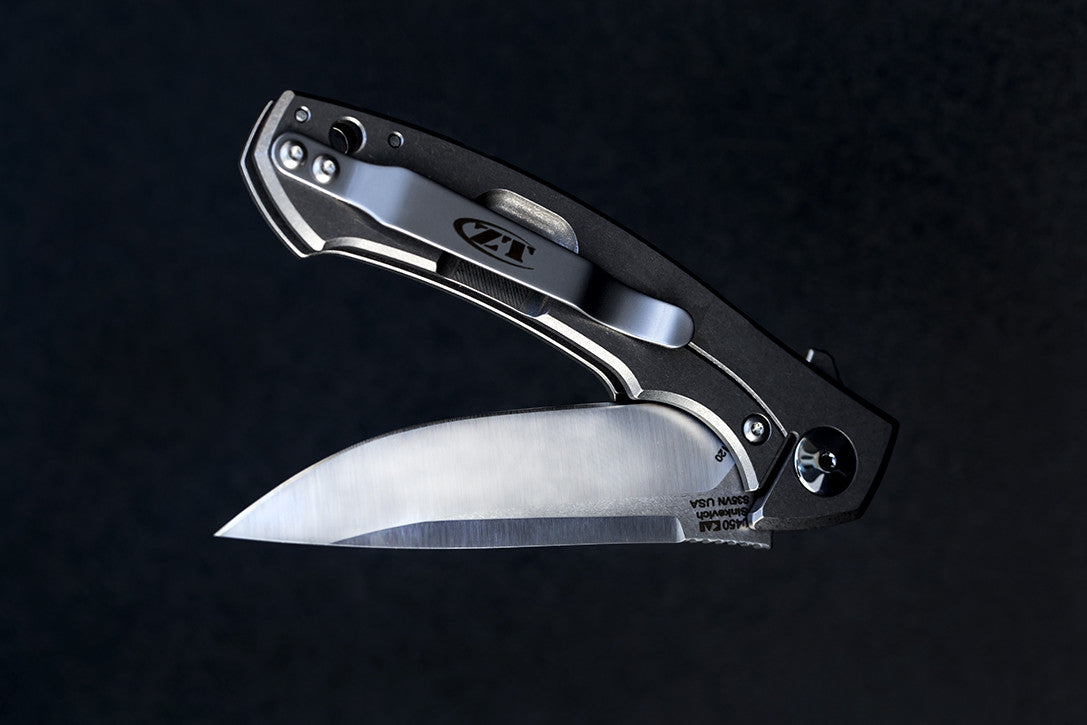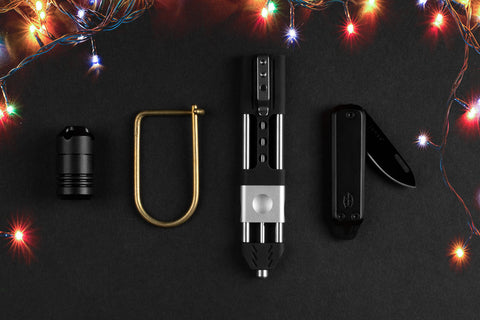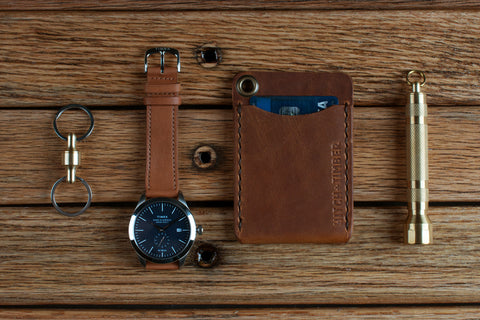Anatomy Of A Folding Knife

Buying a knife can be a complicated task. And it isn't made any easier by the unusual language used to describe them. Though it is easy to think that knives are simplistic tools, in reality they're fairly intricate and multi-faceted compositions. And their design is somewhat entrenched in terminology that may be unfamiliar to the layman. But, it doesn't have to be. To make things a little easier and to clarify any confusing verbiage, we've organized this glossary of common terms, which you can use both as a learning tool and as a reference - should you ever need it.
While this may not be an all-inclusive glossary - like all other languages, knife terminology is prone to evolution - we've tried to put together a reasonably inclusive list of part names, descriptive words, and definitions common in the knife community, so as to better educate you on what these things mean. Hopefully, this will make finding your perfect knife a much easier endeavor and perhaps teach you a bit about some of the things we are very passionate about here.
Though not all folding knives have just one blade, it is fair to say that - most of the time - a knife has a sharp side and a not-so-sharp side. In order to streamline this glossary, we've broken the terminology down (mostly) alphabetically within those two categories, based on the end to which the term generally refers.

The Sharp End
It's generally understood that the blade of a knife is the part that is intended for and best suited to the act of cutting. The most literal definition is, "the flat sharp part of a weapon or tool that is used for cutting." What is less well-known is the fact that there are many terms to describe the type of blade, its individual construction, and other added or subtracted parts therein.
Back: On a single-edged knife, this refers to the unsharpened side of the blade.
Base: The lower part of the blade which connects to the blade handle.
Bevel: The part of the knife blade that has been ground down to create an edge.
Choil: A recess at the base of the blade, beneath the edge, that is unsharpened and can act as a hand and/or finger guard.
Deployment: The method by which a folding knife's blade is unfolded from its handle.
Edge: The thin sharpened part of the blade.
Flipper: A protrusion in the base of the blade on the backside which is primarily used as a pressure tab to flip the knife open. Can also act as a finger guard when the knife is open.
Front: The part of the blade which has the primary edge.
Grind: The method and style with which the bevel and edge have been applied to the blade. This can be observed by looking down the blade from the tip to the base. Different types of grinds elicit different profiles including, but not limited to:
- Flat: An evenly tapered bevel which runs from the back to the edge of the blade.
- Hollow: A concave beveled edge, typically seen on straight razors. Very sharp but does not retain an edge well.
- Saber: Similar to a flat grind, but the bevel starts at the middle of the blade, rather than the back. Also known as a V-grind.
Hardness: A measurement on the Rockwell Hardness Scale indicating the molecular density of a blade, most often denoted as HRC. Softer blades are easier to sharpen, whilst harder blades hold an edge better for longer.
Jimping: A series of notches on an unsharpened portion of the blade that provide added grip beyond the handle.
Nail Mark/Nick: A curved slot in the blade of some pocket knives that allows the user to open the knife with a thumb or fingernail.
Point: The sharpened tip of a blade. There are a number of different types of tips, including, but not limited to:
- Clip: resembles a blade on which the top third of the back has been 'clipped' off at a flat or concave angle toward the blade point.
- Drop: a blade whose back follows a gradual convex slope toward the tip, allowing for greater blade strength through the entire blade.
- Sheepsfoot: a blade with a straight front edge and a convex sloping unsharpened back, which is more extreme than a drop point and does not elicit a true cutting tip. A Wharncliff is similar, but has a more gradual longer convex slope.
- Spear: alternatively dagger, a double edged blade primarily used for stabbing or piercing. A needle is similar, but has a thinner more severe tip.
- Tanto: very popular with tactical style knives, a tanto blade has a high flat-ground tip and the edge and back angle toward one another, rather than sloping.
Retention: Word used to describe how well a blade keeps its edge. Higher HRC ratings often indicate better edge retention.
Ricasso: The unsharpened portion of the blade just above the handle. The portion of the blade where a choil can be found.
Serration: a Jagged saw-like edge to a blade. Can extend the entire length of the blade or cover just a portion.
Steel: A hard strong alloy of iron and other elements, which most knife blades are constructed from. Stainless steel is an alloy of iron and chromium and does not rust or corrode as quickly as other alloys. Carbon steel, made from iron and carbon, is the most abundantly produced, but has fewer applications in the EDC knife world.
Swedge: Also known as a false edge, this refers to a bevel on the back of a blade, usually toward the tip, which is unsharpened.
Tang: A protrusion from the base of the blade away from the tip. Usually very short on folding knives, but can extend further in friction folders or for stylistic reasons.
Thumbstud: An alternative to the nail mark and an opposing part to a flipper, the thumbstud is a protrusion out of either side or both sides of the rear of the blade's base, which can be used to flip the knife open.
Thumb Ramp: a concave angle at the back base of a blade that acts both as a guard and as a means to apply extra pressure or leverage at the back bottom of the blade.

The Dull End
The part of the knife that one holds is known as the handle. In a folding knife, the handle also houses the blade when the knife is closed, as well as all of the moving parts, hardware, and any other additions. The variety of potential handle materials is typically a far wider range than that of blades and can include metal, synthetics, naturally occurring materials, and/or combinations of any of the aforementioned. Here are some common terms you may run into which describe the handle, its parts, and its construction:
Bolster: A thick metal junction where the knife blade meets the handle, typically seen on culinary knives, but does exist on some folding knives.
Guard: Any unsharpened piece of protruding material which keeps the hand and/or fingers from slipping up the blade from the handle. Not all knives necessarily have a guard.
Inlay: Any material embedded into the handle, usually ornamental.
Joint: The point of any folding knife where the blade and the handle meet and are joined by a pivot pin.
Lanyard: A piece of leather, cord, twine, or otherwise common on hunting and camping knives and used to affix a knife to a pack, bag, or otherwise.
Lanyard Hole: A machined tunnel, usually located at the base of the handle, through which a lanyard can be strung.
Liner: Usually made of a soft corrosion-resistant metal, this refers to a sheet of material that sits between the blade and the handle and is intended to protect the separate parts from damage.
Lock: A mechanism used to keep the blade in place, whether open or closed. Most frequently, the lock is built into the construction of the knife and requires user-applied pressure in order to release.
Pocket Clip: An accessory to a knife, which may be permanently affixed to the handle or removable, that allows the wielder to affix their folding knife to their belt, pocket, or otherwise.
Spine: An alternative term for the back of a blade, but also refers to a piece of metal that stretches the length of the handle in back lock folding knives.
Spring: A piece of material used to exert pressure either to keep a knife closed, open, or to assist with a knife's opening.
Standoff: A spacer within the handle housing which keeps the knife from warping.
Featured Folder

Zero Tolerance ZT0450 Sinkevich
© Photography by Gallantry







